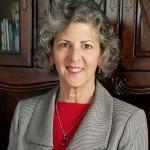This article is the third in a three-part series that will explore the needs of Catholics with autism in the Archdiocese of Milwaukee, and address current efforts to create resource-sharing networks to better support this community.
There sometimes exists a false belief among those working in religious education, said Carol Wingenter, that autistic Catholics do not exist in their community.
“Don’t assume that because no one has reached out, there isn’t anyone at your parish with these needs,” she said. “They exist — they’re just not participating.”
Wingenter is an occupational therapist who has a long history of working with children who experience autism; she has also spent many years working in children’s ministry in Catholic parishes. A disappointing encounter with their local Catholic parish can leave a family with an autistic member feeling turned off to the faith altogether, Wingenter said, noting that there is room for improvement within the Church when it comes to acknowledging and recognizing the needs of this particular community.
“The gifts that people with different needs bring to the table are huge for us to learn from, if we open our eyes and our hearts to do that,” she said.
Charleen Katra, executive director of the National Catholic Partnership on Disability (NCPD), said that ultimately ministry to Catholics with autism is about providing options.
“The more options you provide, the more people you serve,” Katra said. “Maybe not every parish can do everything, but all parishes can do something. They can put out some bulletin inserts, they can put things in the prayers of the faithful for our families. Start where you can, but start. The Holy Spirit will move mountains once we start doing some of the footwork.”
Wingenter suggested applying the same strategy of hospitality that parishes show to families with small children to persons with autism or sensory processing disorders. Many parishes will have a message printed in their bulletin reassuring young parents that their children are welcome in church, even if they struggle to be quiet. Sometimes, a priest will even make this message from the pulpit. If the same message was extended to the autistic community, said Wingenter, it would go a long way toward making families feel comfortable approaching the priest or pastoral staff with particular spiritual and sacramental needs.
“This is a ministry of evangelization and hospitality,” said Katra.
Additionally, having “fidget bags” available for families with children who experience sensory processing issues could help to create a welcoming environment. The bags could be filled with fidget toys, a visible schedule of different parts of the Mass so the child knows what to expect next, or even noise-canceling headphones. “Simple little things like that might make people feel a little more welcome,” said Wingenter. “Even if families choose not to use the bags, they know you’re thinking of them.”
It is important to be sensitive to stimulants that exist within the liturgical setting of the Mass, especially if community members with autism have expressed difficulty with any particular aspect. “Does the organ need to be played at full volume? Does the church have to be clouded with incense, or will just a little bit do?” said Wingenter.
The NCPD website includes information on offering Masses with sensory-friendly adaptations, a strategy that has been embraced by several dioceses in the country. “Sensory-processing disorders really aren’t even exclusive to someone with autism, though they may exhibit more of those kinds of symptoms — it can even be a piece of ADHD,” said Katra.
If there is a child with autism in the parish, Katra recommends “using resources wisely” and not being afraid to collaborate with secular organizations like the child’s school or local groups that provide support. “They’re usually surprised to hear from the church, but they’re elated to help us,” she said.
Be attentive to spaces in your parish that might offer persons with sensory issues some respite, said Wingenter. Is there a narthex, a gathering space or a balcony? Are there spaces within church that are quieter, where people can still see well? “There are no right or wrong things when it comes to meeting the needs of that particular individual,” said Wingenter. “They should be welcome inside church, but if they are more comfortable viewing from outside of church, just be glad they are in the narthex.”
When in doubt, said Wingenter, the golden rule of ministry to anyone who experiences autism or sensory-processing issues is this: simply listen.
“And if you don’t know what to say, just repeat back what you just heard. It assures the person you’re listening, and when you repeat what you heard it helps your own brain learn, remember and process the information better.”
For more information on how your parish can minister to Catholics with autism, and to access a full year of adapted faith formation activities downloadable for free, visit the NCPD website at ncpd.org.
Katra’s books, “The Adaptive Teacher: Faith-Based Strategies to Reach and Teach Learners with Disabilities” and “How to Talk to Children about People with Disabilities” are both available on Amazon.

Carol Wingenter

Charleen Katra
